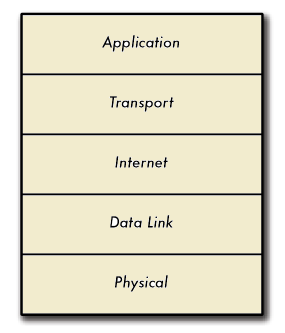| Wireles Networking is a practical guide to planning and building low-cost telecommunications infrastructure. See the editorial for more information.... |

|

Home  Network Design Network Design  The Logical Network The Logical Network |
|||||
| See also: Designing the Physical Network | |||||






|
|||||
|
The Logical NetworkCommunication is only possible when the participants speak a common language. But once the communication becomes more complex than a simple ongoing broadcast, protocol becomes just as important as language. All of the people in an auditorium may speak English, but without a set of rules in place to establish who has the right to use the microphone, the communication of an individual's ideas to the entire room is nearly impossible. Now imagine an auditorium as big as the world, full of all of the computers that exist. Without a common set of communication protocols to regulate when and how each computer can speak, the Internet would be a chaotic mess where every machine tries to speak at once. TCP/IP refers to the suite of protocols that permit conversations to happen on the global Internet. By understanding TCP/IP, you can build networks that will scale to virtually any size, and will ultimately become part of the global Internet. The TCP/IP modelData networks are often described as being built on many layers. Each layer depends on the operation of all of the underlying layers before communication can take place, but only needs to exchange data with the layer above or beneath it. The TCP/IP model of networking1 describes five layers, as shown in this diagram:
The previous section on network layouts described layer one: the physical layer. This is the physical medium over which communications take place. This can be a copper CAT5 cable, a fiber optic bundle, radio waves, or just about any other medium. The next layer up is referred to as the data link layer. Whenever two or more nodes share the same physical medium (for example, several computers plugged into a hub, or a room full of laptops all using the same radio channel) they use the data link layer to determine whose turn it is to transmit on the medium. Common examples of data link protocols are Ethernet, Token Ring, ATM, and the wireless networking protocols (802.11a/b/g). Communication on this layer is said to be link local, since all nodes connected at this layer can communicate with each other directly. On networks modeled after Ethernet, nodes are referred to by their MAC address, which is a unique 48 bit number assigned to every networking device when it is manufactured. Just above the data link layer is the Internet layer. For TCP/IP, this is the Internet Protocol (IP). At the Internet layer, packets can leave the link local network and be retransmitted on other networks. Routers perform this function on a network by having at least two network interfaces, one on each of the networks to be interconnected. Nodes on the Internet are reached by their globally unique IP address. Once Internet routing is possible, a method is needed to reach a particular service at a given IP address. This function is filled by the next layer, the transport layer. TCP and UDP are common examples of transport layer protocols. Some protocols at the transport layer (such as TCP) ensure that all of the data has arrived at the destination, and is reassembled and delivered to the next layer in the proper order. Finally, at the top of the pile we have the application layer. This is the layer that most network users are exposed to, and is the level at which human communication happens. HTTP, FTP, and SMTP are all application layer protocols. The human sits at the top of all of the layers, and needs little or no knowledge of the layers beneath to effectively use the network. One way to look at the TCP/IP model is to think of a person delivering a letter to an office building downtown. They first need to interact with the road itself (the physical layer), pay attention to other traffic on the road (the data link layer), turn at the proper place to connect to other roads and arrive at the correct address (the Internet layer), go to the proper floor and room number (the transport layer), and finally find the recipient or a receptionist who can take the letter from there (the application layer). The five layers can be easily remembered by using the mnemonic “Please Don't Look In The Attic,” which of course stands for “Physical / Data Link / Internet / Transport / Application.”
|
|||||
Home  Network Design Network Design  The Logical Network The Logical Network |
|||||
Last Update: 2007-01-25


